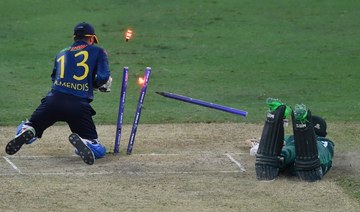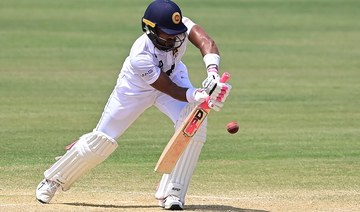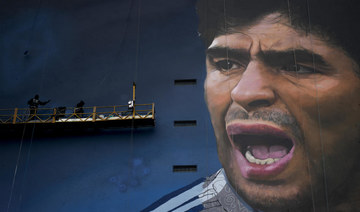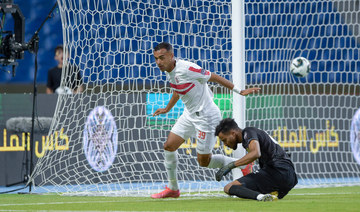It would be rare to find a cricketer at any level who has not fallen victim to a leg-before-wicket decision which he or she felt to be unjust.
Although caught is the most common form of dismissal, with 57 percent, LBW accounts for around 14 percent of dismissals, meaning that its importance should not be treated lightly.
This is placed into greater perspective because the decision rests with the umpire.
In today’s international cricket, umpires are supported and informed by technology and by an off-the-field third umpire who has access to the technology.
In professional cricket, professionally trained umpires make decisions without such support.
In club cricket, there are umpires, usually former players, who have obtained umpiring qualifications but there are many matches at a lower level where the umpires are also players in the match. This does raise the issue of potential bias, especially as the relevant law is open to significant interpretation.
The original cricket laws of 1744 did not contain a dismissal mode of LBW, only requiring no “standing unfair to strike” by strikers.
In those days, a curved bat was used to hit underarm deliveries, so the striker needed to stand at distance from the leg stump to provide an arc to swing at the ball. Thirty years later, the introduction of straight bats changed this stance and strikers were able to make strategic use of their legs to defend the wicket.
Revised rules in 1774 specified that the batsman was to be given out if he, “puts his leg before the wicket with a design to stop the ball and actually prevent the ball from hitting his wicket by it.”
In 1788, the word design was removed, and accidental obstruction added, while in 1823, the point of interception was widened from legs to any part of the body. These changes led to one commentator expressing the view in 1868 that the LBW law was, “the most perplexing and disagreeable of the whole code.”
There are many who hold this view a century-and-a-half later. Imagine a club cricket match in which players double as umpires in rotation.
The match is heading for an exciting conclusion, four runs to win and one wicket to fall. The away team’s captain is batting, the non-striker is a young man with no batting prowess, and the umpire is a member of the away team. He is very experienced and is known not to like the home team very much following years of fierce rivalry. In particular, he does not like the person who is about to bowl.
When the ball is delivered it pitches outside the off stump, unexpectedly cuts back sharply to the surprise of the away team captain, who thrusts his padded leg toward the off-side in the direction of the ball, which hits him on his front leg, but outside of a wicket-to-wicket line. There is a prolonged and vociferous appeal for LBW from the home team and supporters.
In this combustible situation, no one seems to have noticed that the ball has ricocheted off the batter’s pads and is about to reach the boundary.
This is substantial information for the player-umpire to absorb in a few seconds and, on his assessment, the outcome of the match will be decided. He has studied the laws of cricket intensely, but he is in a complete dilemma. He knows that law 36 requires that all of five circumstances need to apply for the striker to be given out. First, the delivery needs to be legal, which it is.
Second, the ball must pitch in line between wicket and wicket, or on the offside of the striker’s wicket, which it has. Thirdly, the ball has not touched the bat, but the striker has intercepted the ball with a part of his person, which is the case. Fourthly, the point of impact must be between wicket and wicket, which it is not. However, if the striker has made no genuine attempt to play the ball with the bat, then the point of impact is not only between wicket and wicket but also outside of the line of the off stump. Fifthly, the ball would have hit the wicket but for the interception.
It is not difficult to discern that, in this circumstance, any umpire would be taxed to make a just decision. When local rivalry, history, aligned umpires, and a tense finish combine, the context is quite different to international matches with neutral umpires. Nevertheless, the principles are the same. The first three criteria for dismissal have been met, but have the fourth and fifth ones? The umpire must determine if the striker made a genuine attempt to play the ball and that the ball would have hit the wicket.
The law does not define genuine. Does it mean anything other than a deliberate attempt to not play the ball? Without the support of technology, who can really be certain that the ball would have hit the wicket? Many times, I have seen a ball which had beaten the striker and looked certain to hit the wicket deviate or bounce over the top.
Our fictious umpire is left not only with these considerations but also the consequences of his decision. If he gives his captain out, he will incur the wrath of not only his captain but his whole team for a long time. The home team will delight in his discomfort. If he says not out, he will face the full wrath of the home team and accusations of bias and, even worse, cheating.
Prior to the introduction of neutral umpires to international cricket in 1992 and the later introduction of review technology, home umpires gave more visiting batters out LBW than home batters in Test matches.
Controversial LBW decisions still occur at international level, but with a much lower proportion than at club cricket level. There, the potential for bias and simmering controversy is ever present with the LBW law.


























